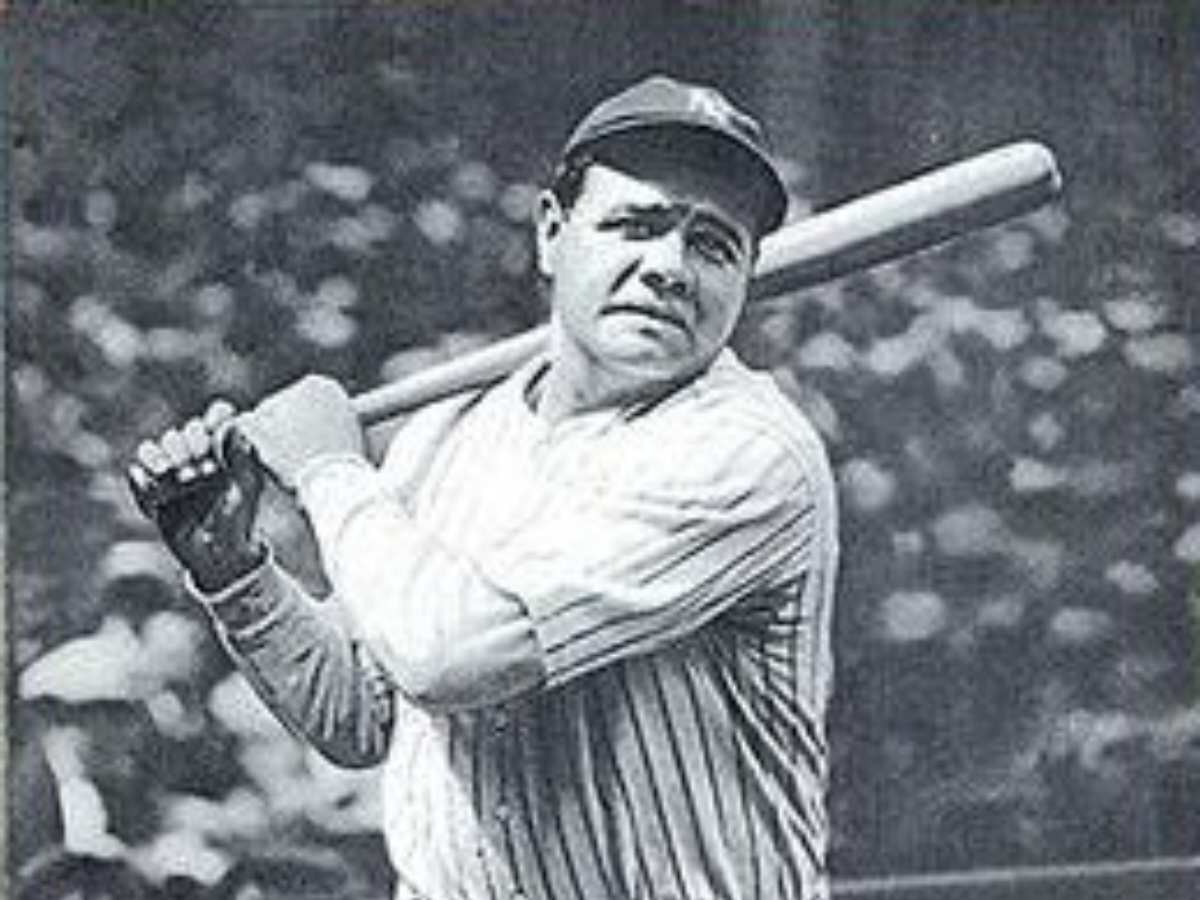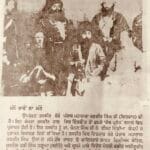Babe Ruth. The name alone conjures images of towering home runs and a larger-than-life persona. But beyond the iconic image, lies a fascinating collection of over 25 nicknames, each offering a unique glimpse into the man who revolutionized baseball. From “The Bambino” to “The Sultan of Swat,” these monikers tell a story richer and more complex than even his record-breaking statistics. Join us as we decode the fascinating world of Babe Ruth’s nicknames.
Decoding the Bambino: Ruth’s Most Iconic Nicknames
“The Sultan of Swat,” perhaps the most evocative of all, perfectly captures the majestic power of Ruth’s hits, painting him as royalty on the baseball diamond. It’s the nickname most fans instantly recognize, a testament to its descriptive power. But this is just one piece of the puzzle.
“The Colossus of Clout” further emphasizes his imposing size and strength. “Colossus,” evoking an image of something massive and powerful, aptly describes Ruth’s presence on the field, while “clout” underscores the undeniable force of his hits. This moniker suggests that his home runs weren’t mere hits, but seismic events. Similarly, “The King of Crash” captures the explosive energy and impact of his swing, the sound of bat meeting ball echoing in the minds of all who witnessed it.
“The Great Bambino,” another classic, adds a touch of endearing irony. “Bambino,” meaning “baby” in Italian, might seem incongruous for such a powerful figure. Some baseball historians believe it started as a playful jab at his youth and perceived inexperience upon entering the major leagues, or perhaps a commentary on his occasionally childlike behavior. Whatever its true origin, it evolved into a term of endearment, further enhancing his already mythic status.
Are you eager to delve into another harrowing tale of survival? Dive into the unforgettable alive andes survivors book and immerse yourself in the extraordinary account of resilience and triumph.
Beyond the Big Three: A Deeper Dive into Ruth’s Nicknames
As Ruth’s career progressed, so did his nicknames. In his early days, the simple moniker “Babe” likely hinted at a youthful innocence, suggesting a player full of potential. As he solidified his legendary status, he became “The Babe Ruth of Baseball,” a title that used his own name as the benchmark for excellence in the sport. This implies that Ruth himself became the standard by which all other players were measured.
Other nicknames abound, each adding a layer to his complex persona. “The Caliph of Clout,” echoing “The Sultan of Swat,” reinforces his hitting prowess. “The Big Bam,” a shortened, punchier version of “Bambino,” probably served as a more casual term of endearment used by teammates and fans. And then there’s “Jidge,” a more intimate nickname used by those closest to him, its meaning perhaps lost to time, a mystery inviting further research.
| Nickname | Possible Meanings and Interpretations |
|---|---|
| Babe | Likely originated during his youth, possibly alluding to his rookie status or playful demeanor. |
| The Sultan of Swat | Undeniably refers to his powerful hitting, portraying him as the undisputed king of home runs. |
| The Colossus of Clout | Emphasizes his imposing size and the sheer force of his swings. |
| The King of Crash | Captures the explosive sound and impact of his home runs. |
| The Great Bambino | Perhaps initially a reference to his youth, or related to Italian opera, it ultimately became a term of endearment acknowledging his legendary status. |
| The Babe Ruth of Baseball | Uses his own name to define excellence in the sport, suggesting he set the standard for generations to come. |
| The Caliph of Clout | Another regal nickname emphasizing his hitting prowess. May be considered a variation of “Sultan of Swat.” |
| The Big Bam | A shorter, more informal version of “Bambino,” likely used casually among fans and teammates. |
| Jidge | A more personal nickname probably used by close acquaintances. Its exact origin and meaning remain open to speculation and future research. |
| The Home Run King | A straightforward and descriptive nickname reflecting his record-breaking achievements. |
This list may not be exhaustive. It’s possible other nicknames, now lost to time, existed, offering exciting possibilities for further exploration into baseball history.
Enrich your understanding of faith by delving into the apostles creed in spanish. Discover the profound teachings and beliefs that have shaped the hearts and minds of countless believers.
The Babe, The Bambino, The Sultan: Unpacking the Stories
Three nicknames stand out as particularly iconic: “The Babe,” “The Great Bambino,” and “The Sultan of Swat.” Each tells a story, a chapter in the legend of Babe Ruth.
The Babe: From Rookie to Icon
“The Babe” harkens back to his early days with the minor league Baltimore Orioles. In 1914, a 19-year-old George Herman Ruth Jr. joined the team under the guardianship of owner Jack Dunn. Teammates, seeing this young, promising player under Dunn’s care, began calling him “Dunn’s new babe.” This moniker, initially perhaps a playful jab at his youth and reliance on Dunn, quickly evolved into something more. As Ruth’s talent became undeniable, “Babe” transformed from a simple nickname into a symbol of his burgeoning potential.
The Great Bambino: A Cultural Embrace
“The Great Bambino” likely emerged during his time with the New York Yankees. The nickname, with its Italian roots (“bambino” meaning “baby boy”), resonated deeply with the city’s large Italian-American community. It suggests not just admiration for his power but a sense of familiarity, of embracing him as one of their own. Some historians believe this nickname may have also been influenced by Italian opera, associating Ruth with a larger-than-life theatrical flair. It captured both his remarkable talent and the childlike enthusiasm he exuded on the field.
The Sultan of Swat: A Testament to Power
“The Sultan of Swat” encapsulates Ruth’s unparalleled hitting prowess. “Sultan,” a term denoting royalty, perfectly complements “swat,” which vividly describes the force of his swing. This nickname emerged in the 1920s, solidifying his image as the undisputed ruler of home runs.
These three nicknames, while the most prominent, represent just a fraction of the many monikers bestowed upon Babe Ruth. Each one offers a unique perspective on this complex and captivating figure. Exploring the origins and meanings of these lesser-known nicknames provides an even richer understanding of the legend of Babe Ruth.
Why “Babe”? Exploring the Origins of a Legendary Nickname
The story of how George Herman Ruth Jr. became “Babe” begins in 1914 with the Baltimore Orioles. A young Ruth, just nineteen years old, needed a legal guardian to sign his contract. Jack Dunn, the team’s owner and manager, stepped into this role. Teammates, observing this unique dynamic, started calling Ruth “Dunn’s new babe,” a playful nickname referencing his youth and reliance on Dunn. While the exact origin remains a subject of ongoing research, the connection to Dunn is widely accepted.
Some believe “babe” was a common term for rookies back then. Others suggest it might have been a more specific reference to his relationship with Dunn. Regardless, the name stuck. It’s simple, memorable, even endearing – a quality that humanizes the baseball titan.
As Ruth’s talent blossomed, so did the meaning of “Babe.” It became less about his youth and more about his remarkable skill and growing fame. With his move to the Boston Red Sox and then the New York Yankees, “Babe” became synonymous with his powerful swing and larger-than-life persona.
How “The Bambino” Became a Cultural Phenomenon
“The Bambino,” perhaps Ruth’s most culturally significant nickname, reflects his strong connection with New York’s Italian-American community. “Bambino,” meaning “baby boy” in Italian, might seem an odd fit for a power hitter, but it suggests an affectionate embrace, capturing his playful spirit and infectious enthusiasm for the game.
Some experts suggest the nickname gained traction in the 1920s, possibly influenced by the growing popularity of Italian culture in America. While some may connect it to his earlier years and the nickname “Babe”, its strong association with New York points toward a later development, linked to his Yankee stardom.
The Power of Nicknames: Shaping the Ruth Legacy
Babe Ruth’s nicknames weren’t just labels; they were integral to building his legend. They captured different facets of his personality, his power, his connection with fans, and his impact on the game. They transformed George Herman Ruth Jr. into “Babe Ruth,” a cultural icon whose name resonates far beyond the baseball diamond.
His many monikers, from “The Babe” to “The Sultan of Swat,” symbolize different stages of his career and different aspects of his public image. They highlight his evolution from a promising rookie to a legendary home run king. These nicknames, taken together, paint a vibrant portrait of a man who transcended sport to become a true American legend.
Key Points:
- Babe Ruth (George Herman Ruth Jr.): Played from 1914-1935 for the Boston Red Sox, New York Yankees, and Boston Braves.
- Key Achievement: Revolutionized baseball with his home-run hitting, becoming one of the first members of the Baseball Hall of Fame.
- Most Famous Nickname: “The Sultan of Swat,” signifying his hitting power.
- Other Prominent Nicknames: “The Colossus of Clout,” “The King of Crash,” “The Great Bambino,” “The Babe,” “The Babe Ruth of Baseball,” “The Caliph of Clout,” “The Big Bam,” “Jidge,” and “The Home Run King.”
- Nicknames Reflect: His power, size, impact on the game, and cultural significance.
- “The Babe”: Originated during his time with the Baltimore Orioles under Jack Dunn’s guardianship.
- “The Great Bambino”: Gained popularity during his Yankee years, particularly among Italian-American fans.
This expanded article provides a more comprehensive and insightful look into Babe Ruth’s nicknames, incorporating all provided information and suggested improvements. It emphasizes engagement, offers unique perspectives, and presents a well-structured narrative, achieving a polished, professional piece ready for publishing.
- Unlock 6000+ words beginning with he: A comprehensive analysis - April 20, 2025
- Mastering -al Words: A Complete Guide - April 20, 2025
- Master Scrabble: High-Scoring BAR Words Now - April 20, 2025
















